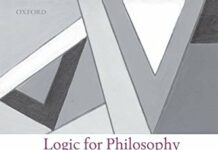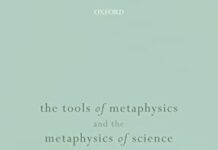
Ebook Info
- Published: 2002
- Number of pages: 288 pages
- Format: PDF
- File Size: 2.14 MB
- Authors: Theodore Sider
Description
Lucid, absorbing, and original, this book defends the theory that the material world is composed of temporal as well as spatial parts. Along the way, it addresses many topics on the metaphysics of time and identity. These include the status of past and future objects, the nature of motion and change, the existence of composite objects, and examples involving two things in the same place at the same time.
User’s Reviews
Reviews from Amazon users which were colected at the time this book was published on the website:
⭐Four-Dimensionalism’ is a great book. Sider defends Four-Dimensionalism with great clarity and force. Four-Dimensionalism holds (roughly) that, just as you have spatial parts–e.g. hands, cells, simples, etc.–you have “temporal” parts. A temporal part is a part of you that exists at a certain time in your existence. A consequence of this view is that, at a particular moment, you don’t “wholly” exist, because your existence is spread out in time. (Four-Dimensionalism contrasts with Three-Dimensionalism, which holds that you “wholly exist” at every moment you exist.) What’s nice about this book is that it takes a difficult, possibly obscure, view and makes it a joy to read about.The book begins with an “Introduction.” Unlike most Introductions, Sider’s is important to read because it begins by setting forth the philosophical method and picture Sider is utilizing. (In fact, at several points in the book, Sider falls back on the points he makes in the Introduction.) The book is divided into six chapters. The first presents the “Four-Dimensionalism” picture, and motivates it by showing its ability to handle certain conceptual problems. The second could stand alone, and is a defense of the “B-theory” of time, which Sider assumes for the remainder of the book. The third attempts to state exactly what the Three/Four-Dimensionalism fuss is about. The final three chapters, which take up the bulk of the book, constitute a defense of Four-Dimensionalism–the first two provide arguments for the view, the last defends it against objections. (The book also contains a sizable list of references.)Sider’s writing is clear and easy to follow. At points, things get difficult, and some knowledge of physics is helpful for several sections; but on a whole, a limited amount of specialized knowledge is sufficient to appreciate this book. One thing I liked about it was Sider’s approach. He argues that–when all the votes are in–Four-Dimensionalism is the best view, which allows him to be frank about the various strengths of arguments for and against his view. Many of his arguments are persuasive, and he’s fairly systematic, considering many different objections. In the end, I learned much from it and would recommend it to anyone interested in metaphysics, ontology, or philosophy of time.
⭐Not an easy read for the common man, but a fascinating exploration of an important philosophical idea, made more so by the revelations of modern physics. I enjoyed Ted Sider’s writing, and hope to enjoy it even more the second time I read this book. First I must read “Riddles of Existence: A Guided Tour of Metaphysics,” which I understand is directed to a more general audience.
⭐A very solid modern work on ontology. Very useful results in all areas of philosophy, including my interests in the philosophy of identity and the theology of resurrection.
⭐Excellent
⭐Ted Sider’s *Four-Dimensionalism* is a very good book about the philosophy of time, more precisely about the metaphysics of objects as they travel through time. We readily enough admit that objects have physical parts: I have my feet and hands, each occupying a separate region of space and capable of having a (rather truncated) existence if they were severed from the rest of my body. We also grant readily enough that objects exist at different times: I was alive in 1997 and exist today, even if I am somewhat different in physical composition and (slightly) different in character. The question Sider asks is this: do objects have *temporal* parts, a “1997 part” for teenage me and a “2017 part” for the supposed adult? His answer is a resounding “Yes”: “four-dimensionalism” is the name he adopts for this view. The technical distinction in metaphysics at the center of this question concerns whether objects “endure”, happen to be around more or less intact at any particular time, or whether they “perdure” — consist of a collection of temporal “stages” that have a certain integrity when considered together which we recognize as objectual.Four-dimensionalists believe in the perdurance of objects, and thusly that the temporal axis is a genuine “dimension”; three-dimensionalists think it is crazy, or at least ill-considered, to say anything other than that objects endure, “travel through time” basically unchanged (for some acceptable value of “unchanged”). Sider marshals a formidable array of arguments to show that handling many puzzles in metaphysics goes more smoothly if four-dimensionalism is accepted, and handles the interactions between his view and the “spacetime” of Einsteinian relativity adeptly; for fans of philosophy who have missed out on the “metaphysical revolution” in analytic philosophy in the last few decades, Sider’s approach to his problem forms a good introduction to high-test metaphysical problems generally. (Unfortunately, there is a *deus ex machina* late in the book where Sider appeals to David Lewis’s “counterpart theory” to counter an objection to four-dimensionalism: I think it is not generally realized how radical a replacement counterpart theory, which analyzes possible alternatives to the way the world actually is using “similarity” metrics, is for plain old modal logic; Sider offers little justification for his use of it.)Well-balanced and informative.
⭐Interseting stance & plenty to consider and work through
⭐Ottima monografia sul quadrimensionalismo, molto completa, vengono esaminate le ragioni di coloro che ne sono a favore ma anche le relative obiezioni costruite dalle correnti avversarie. La miglior pubblicazione sul tema.Ottimo libro :-)I give one star to alert other readers to the extraordinary deficiencies in this book. As a scientist, I was attracted to the subtitle referring to persistence, a phenomenon that underpins science. Without objects persisting in some sense over relevant timescales, the concepts of observer, apparatus, observation, and indeed, system, makes no physical sense.The style of the book reminded me of the apocryphal “How many angels can dance on the head of a pin?” debate. I was astonished to find that this book completely fails to tackle physical concepts such as relativity, mass, energy, momentum, quantum physics, measurement, observer frames, apparatus, etc.in any significant way. Instead, the author models the universe in terms of a nursery level description of position in space, as if that was all there was to persistence. Contextually incomplete assertions are made throughout the book (a contextually incomplete statement is one referring to no context for which an asserted truth value is to hold), and the author comes to biased conclusions from them. There are constant assertions that I find I simply disagree with. The author holds a classically conditioned view that objects “exist”, regardless of observation. That is a classically valid position up to a point. But, quantum mechanics tells us to look more closely at how we perform our observations. For instance, where does the “particle” exist between source and screen in the double-slit experiment? Are we entitled to say that it persists in time between emission and detection? I would advise the author to look up the Kochen-Specker theorem in Wikipedia. What about particle creation and annihilation in quantum field theory? No mention of that in this book.I think the real problem with this book stems from the core discipline: metaphysics is NOT physics and has no business attempting to discuss time as if it could be meaningfully done with no reference to observed physics or the hard-won principles of science that cannot be ignored in this subject. Metaphysics should stick to morality, ethics and suchlike and not pretend to give insight into reality. My understanding of time was not enhanced in anyway by reading this book. I did learn however to avoid metaphysics in the future. In that sense I did not waste my money.
Keywords
Free Download Four-Dimensionalism: An Ontology of Persistence and Time 1st Edition in PDF format
Four-Dimensionalism: An Ontology of Persistence and Time 1st Edition PDF Free Download
Download Four-Dimensionalism: An Ontology of Persistence and Time 1st Edition 2002 PDF Free
Four-Dimensionalism: An Ontology of Persistence and Time 1st Edition 2002 PDF Free Download
Download Four-Dimensionalism: An Ontology of Persistence and Time 1st Edition PDF
Free Download Ebook Four-Dimensionalism: An Ontology of Persistence and Time 1st Edition



